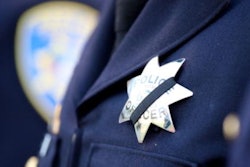Earlier this week, CBS-58 TV reported that K-9 handlers with the Milwaukee Police Department underwent training on how to perform first aid and CPR on their K-9 partners. The training included information on a dog's distinctive physiology such as the fact that a dog's heart is on the right side of the body—not the left like in humans—affecting the positioning for CPR.
One of the interesting elements to the recent news out of Milwaukee was that 14 handlers with MPD are "now equipped with the education to save any dog's life—whether it's helping a choking dog or administering Narcan to a dog who's accidentally sniffed drugs."
Not long ago in this space we explored the unique training challenges and myriad benefits of police K-9 Units—noting in particular that K-9 training is continual and ongoing. So, too, should training for officers encountering all manner of animals on patrol—from escaped pets to wandering wildlife. Here are some reminders about dealing with animals on patrol.
Basic Precautions
First and foremost, have handy any and all necessary PPE. Wearing gloves should seem obvious, but there are many dash-cam and body-worn videos of officers dealing with an animal without this basic level of protection. The plastic face masks made so popular during the pandemic are also good tools to have at your disposal.
Furthermore, watch your speed. An animal in pain or in peril is far more likely to "freak out" if the responding officer is not completely calm and deliberately slow in their movement. Any sudden move by officers coming to an animal's rescue could be construed as an attack, and bad things can happen even if the subject in question is a pet house cat.
Specialized Equipment
The best friend of any officer approaching an animal in distress can be a control pole. Again, not every squad car needs to have this essential animal control equipment in the trunk, but having access to one of these simple devices from a responding backup officer is highly recommended.
In the case of wild animals wandering into a residential or commercial neighborhood, the ideal solution is to deploy a tranquilizer gun, put the creature into a slumber, and return it to its natural habitat. This is almost always the exclusive domain of the Animal Control Unit, but putting a tranq gun in the trunk of a supervisor's squad car isn't a bad idea.
Speaking of backup officers and animal control, if your city or town has such a unit it's best to contain the animal and call in the professionals. They have all the necessary equipment and specialized training needed.
Last Resorts
When no other alternative is appropriate, officers must be prepared to put an animal down. Many police officers have never been formally trained to shoot an animal—in fact, not every agency trains for this. In rural jurisdictions—where cattle vastly outnumber people—this skill is often learned at a young age. For officers whose off-duty hobby is hunting, the knowledge is gleaned from walking the woods with elder and established hunters telling tall tales.
Police leaders would do well to seek outside assistance from animal experts to help patrol officers be prepared to do what to them might seem anathema—dispatching a defenseless animal.
Final Thoughts
Educate yourself on the types of animal calls your agency has handled in years past. The seasoned veterans will gladly tell you stories of harrowing—and hilarious—misadventures with the local fauna.
The folks in Florida and Louisiana have alligators, but not elk—their counterparts in Montana and Wyoming have the exact opposite problem.
Animal rescue is incredibly common for law enforcement, so seek the training and tools that prepare you for this nearly certain eventuality.
















